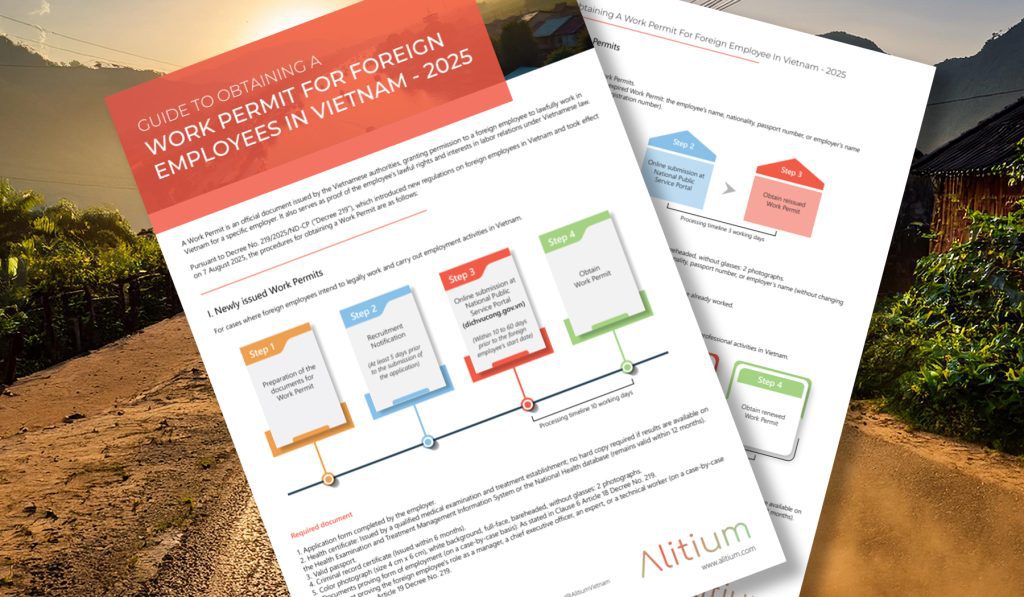Key Changes, Draft Decree Guidance, and Practical Implications for Vietnam’s New Corporate Income Tax Law in 2025
Vietnam’s new Corporate Income Tax (CIT) Law (Law No. 67/2025/QH15), effective from 1 October 2025 (applicable to the 2025 tax year), marks a significant overhaul of the country’s tax framework. The reform seeks to modernise Vietnam’s tax system, align it with global developments, and provide targeted support for innovation, sustainability, and small and medium-sized enterprises (SMEs).
To guide implementation, the Ministry of Finance released a Draft Decree in August 2025 for public consultation. This Draft Decree provides detailed rules on preferential tax rates, taxpayer scope, deductibility, and related-party transactions. The final version is expected before the Law takes effect, with further guidance likely to follow in Ministry of Finance circulars. Together, the new Law and Decree will have far-reaching implications for both multinational corporations and domestic businesses.
Expanded Taxpayer Scope and the Digital Economy
One of the most notable changes is the expansion of taxpayer scope. The Law makes clear that foreign enterprises operating in the digital economy, such as e-commerce platforms and online service providers, will be deemed to have a taxable presence in Vietnam. These entities will now be subject to CIT on Vietnam-sourced income, even if they lack a physical office or staff in the country.
This shift ensures greater tax equity between domestic and foreign businesses while addressing the long-standing challenge of taxing digital commerce. However, businesses will need to consider how these rules interact with Vietnam’s double tax agreements, as treaty obligations may limit the reach of domestic law.
Foreign e-commerce and digital platforms can now be deemed a Permanent Establishment in Vietnam.
Incentives for Innovation, Sustainability, and SMEs
The reforms introduce new categories of tax-exempt income, reflecting Vietnam’s policy emphasis on innovation and green growth. Income generated from R&D, technological development, digital transformation, and innovation projects may qualify for up to three years of exemption. Similarly, income from the first-time transfer of carbon credits and the initial issuance of green bonds will be exempt, a move designed to stimulate the growth of Vietnam’s carbon market and green finance sector.
Support for SMEs is also central to the reform. For the first time, Vietnam is introducing a tiered preferential tax rate regime: enterprises with annual revenue not exceeding VND 3 billion will be taxed at 15%, while those earning between VND 3 billion and VND 50 billion will face a 17% rate. Eligibility will generally be assessed on the basis of the prior fiscal year’s revenue, with anti-fragmentation rules in place to prevent businesses from artificially splitting operations to access lower rates.
SMEs with revenue under VND 3 billion will benefit from a reduced 15% tax rate.
Tighter Deductibility and M&A Implications
The Law introduces stricter compliance rules for deductible expenses. From October, any business expense of VND 5 million or more must be paid non-cash to qualify as deductible, aligning CIT with VAT requirements and closing a loophole that has long facilitated fake invoicing.
Capital gains taxation is also being reshaped. A proposed 2% CIT on the gross proceeds of indirect share transfers by foreign investors will replace the current regime of taxing 20% of net gains. This shift is intended to simplify administration but could increase tax burdens for deals with slim profit margins or losses. Businesses engaged in M&A activity will need to carefully revisit their structuring models in light of this change.
A flat 2% tax on indirect share transfers may increase costs on low-margin deals.
Revamped Incentives and Expansion Projects
The incentive regime has been recalibrated to focus on high-value sectors such as high technology, digital economy initiatives, and high-tech agriculture. This represents a shift away from the broader, capital-based incentives that previously dominated Vietnam’s landscape.
Importantly, enterprises that expand existing projects, whether by scaling capacity, introducing new technology, or enhancing productivity, will be permitted to continue applying the same incentives as the original project. This provision offers reassurance to investors considering reinvestment in Vietnam.
Expansion projects can retain the same tax incentives as their original investment.
Transfer Pricing Implications of the New Rates
Vietnam’s transfer pricing framework exempts domestic related-party transactions from full documentation requirements where all parties are taxed at the same rate and no incentives apply. The introduction of tiered 15% and 17% SME rates fundamentally alters this balance.
Where related entities are subject to different rates, for example, one company taxed at 15% and another at 20%, the exemption no longer applies. This means domestic groups that previously avoided heavy compliance will now need to prepare full transfer pricing documentation, disclosures, and benchmarking studies.
The Draft Decree also expands related-party definitions and signals stricter scrutiny. Businesses should expect greater audit exposure for intra-group services, royalties, financing, and management fees, and should be wary of restructuring strategies aimed at shifting income to lower-taxed entities.
Domestic groups may now face full transfer pricing documentation requirements.
Preparing for October 2025
The combined impact of the new CIT Law and Draft Decree is significant. While SMEs will benefit from reduced tax rates, they will also face heightened transfer pricing and compliance risks. Larger businesses, meanwhile, must grapple with stricter deductibility rules, new M&A tax provisions, and a more targeted incentive regime.
With the final Decree expected by late September 2025, taxpayers should act quickly. Companies should model their projected revenues against the new thresholds, review group structures for compliance, and prepare contemporaneous transfer pricing documentation, even for wholly domestic operations. Reinforcing governance frameworks now will be critical to navigating Vietnam’s new CIT environment with confidence.
For any further questions you may have, please reach out to us at vietnam@alitium.com
********
This article is intended to provide an overview of recent updates and announcement. While it aims to present useful insights, it is important to note that the content shared here should not be considered as formal legal or taxation advice. For specific guidance on tax obligations or legal matters related to your business, we strongly recommend consulting with a qualified professional, such as a tax advisor or legal expert or directly reach out to us.








